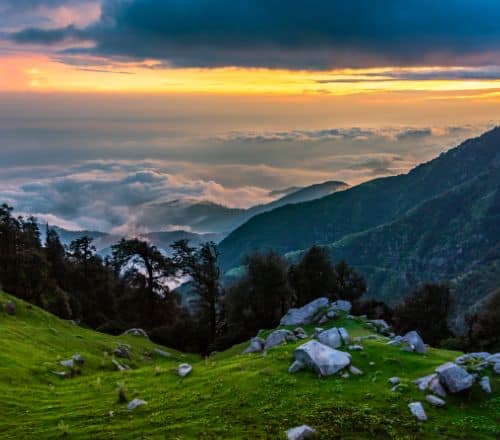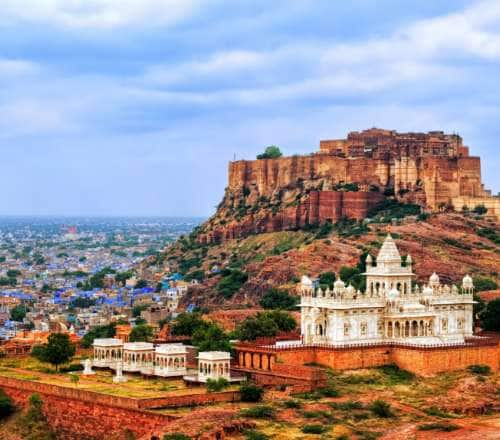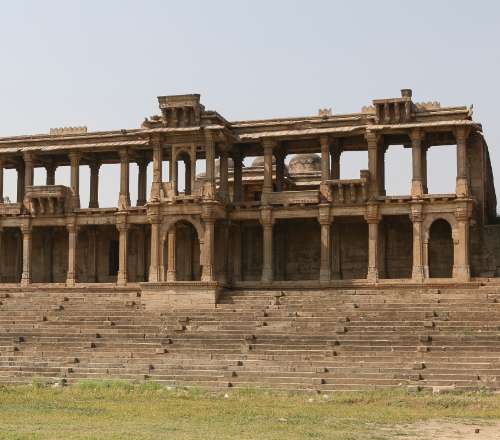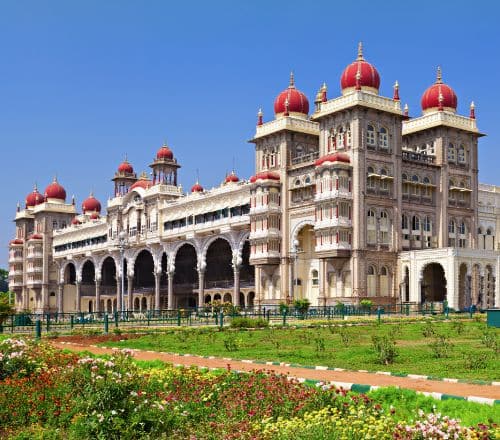Stay logged in to proceed with bookings, orders and offers.
On changing the terminal, you will loose items in your cart. Are you sure you want to change your terminal?
Exploring India’s lesser-known National Parks
"Surely, no one is awake at this hour," I remember thinking to myself. The sun was yet to come out. There I was, bundled up in an open-air jeep with six similarly-dressed passengers, huddled together and hurtling down empty roads towards the entry gate of a popular national park in Madhya Pradesh. Our guide completed our entry formalities in record time before we left. A thick blanket of fog covered the forest. After travelling in silence for the better part of an hour, we had still seen nothing. The forest was so still; every leaf was motionless.
As the sun climbed the sky, the haze began to lift and we finally came upon a clearing where a lone grey langur sat on a rock baring his chattering teeth. It was a comical sight that made everyone chuckle as we shared the poor creature’s discomfort. This was my first wildlife safari experience and it would stay with me for a long time. I didn’t see the big cat on this trip but that didn’t sadden me as much as the circus of canters, safari jeeps and ill-mannered tourists did. Luckily, India has a host of national parks, many of which are off the tourist radar, where you can escape boisterous crowds and money-minded naturalists to enjoy the great outdoors and wonderful wildlife. Here are five unique national parks that aren’t commonly found on the tourist circuit.
High up in the Himalayas is a national park unlike any other. Hemis National Park is the largest national park in the country and has the highest density of snow leopards in a protected area. The snowy, mountainous landscape provides the perfect cover for an elusive but magnificent beast – the snow leopard. With its grey-yellow, spotted fur and nimble manner, it’s a master player in the game of hide-and-seek, making its sightings all about luck.
Hemis National Park doesn’t operate like other parks. There are no jeeps, canters (thanks to the uneven hilly terrain) or fixed entry timings. Safaris are in the form of long walks and hikes, led by local villagers acting as guides, and sightings of the big cat are not guaranteed. But you will be rewarded with a magical alpine jungle dotted with juniper, birch and poplar trees. This park is home to animals like Tibetan wolves, blue sheep, Asiatic ibex, brown bears and red foxes. As this isn't a typical national park, you won't find luxury wildlife lodges with bathtubs, pools and multicuisine restaurants. Instead, you will stay in village homestays full of character and hosted by warm, welcoming locals who treat you like family, allowing a glimpse into Ladakhi culture.
Often overshadowed by its more popular neighbour, Kaziranga National Park, this park has a wealth of flora and fauna minus the crowds. Manas National Park has much to be proud of, like being recognised by UNESCO as a World Heritage Site, Project Tiger Reserve and an elephant reserve. But it doesn't get the attention it deserves.
Apart from this, the park is home to amazing but endangered species like the Assam roofed turtle, greater one-horned rhino, pygmy hog, barasingha (swamp deer), Bengal florican and, of course, the tiger. A safari through this park gives you a chance to admire the beauty of its evergreen forests and its unique inhabitants. Located at the foothills of the mighty Himalayas, the forest sprawls out on either side of the Manas River and shares a border with Bhutan. You will also come across spectacular orchid and fern varieties here. Due to an impressive roster of accolades, Manas National Park is at the top of my wish list and I hope it will be on your wishlist too.
When you first arrive at Velavadar Blackbuck National Park, you might feel like you're in the African Savannah. Its dry, grassland terrain gives you a chance to spot the striking blackbucks. An hour-long drive from Bhavnagar brings you to these beautiful grasslands. Pick the morning safari for the best chances of spotting handsome creatures who strut around at close quarters. You can admire their spiral antlers, muscled backs and the slice of white on their belly as they spring energetically across the land.
The park boasts 1,800 antelopes and 120 species of birds. What’s more, Velavadar National Park also attracts harriers from Siberia in droves (around 2,000) every winter, offering birding enthusiasts a chance to spot this splendid hawk. Hire a guide on your safari to learn more about these incredible birds and also to help you spot lesser-known critters hoopoes, bee-eaters, painted storks, sarus cranes and common snipes. If you're lucky, you might even spot wolves and hyenas. Slather on lots of sunscreen lotion and wear a cap as there isn't much tree cover in the grasslands to provide respite from the harsh rays of the sun.
In the southern reaches of the country, lies an unlikely contender for this list. This is not an ordinary national park, for it sits under the ocean. The Gulf of Mannar Marine Biosphere Reserve spans Kanyakumari, Tirunelveli, Rameswaram and Thoothukudi. The reserve is home to a wealth of coral reefs, mangroves and seagrass. This makes it the perfect feeding ground for dolphins, whales, turtles and sea cucumbers. But there is one creature who loves seagrass more than anyone else, the dugong.
These adorable mammals are also called sea cows and rightly so. They are some of the shyest and most gentle creatures of the sea. Sadly, large-scale hunting has put these marine animals on the endangered species list. Thankfully, the Tamil Nadu government declared Palk Bay, a body of water between southeast India and Sri Lanka, as a dugong conservation reserve, which falls under this biosphere. A glass-bottom boat ride offers the opportunity to see these endearing creatures along with the rest of their co-habitants
The tiger is the first animal to pop up in anybody’s mind when one mentions a wildlife safari. A sighting of this gorgeous creature is at the top of everyone’s wish list and for good reason. This majestic animal commands the attention of the entire forest when it moves, be it of the langurs, who screech manically upon spotting the tiger, or the deer who sprint at the slightest movement of the predator.
If you, too, want a chance at spotting the Royal Bengal Tiger, among other animals, but without the circus of tiger tourism, head to Dudhwa National Park, whose towering teak and sal trees make it a forest right out of a children’s storybook. The park spans 811 sq km, bordering Nepal, made of Kishanpur Wildlife Sanctuary and Katarniaghat Wildlife Sanctuary. This forest is home to another extraordinary mammal, the one-horned rhinoceros. You can only visit the rhino enclosure on an elephant, which makes it a thrilling experience. Another great way of exploring this forest is on a boat, in the Katerniaghat area, where you can spot crocodiles like gharials and muggers, as well as the Gangetic dolphin in the Girwa River. Apart from these, the forest is bursting with a whopping 450 species of birds like the hornbill, the endangered Bengal florican, flycatchers, treepies, serpent eagles, emerald doves and more.
For many, the goal of visiting national parks is restricted to tiger sightings. Because of this attitude, guides are turning wildlife safaris into a tiger-spotting competition, destroying the sanctity of the forest. It is disheartening to see jeeps and canters chasing and cornering these majestic creatures just so that tourists can take selfies with the animals. Being in a forest is much more than this. If you shift your focus, you will find yourself getting attuned to the jungle and its rituals. You will learn to look up at the beautiful canopy of trees protecting you. If you're patient and remain silent, a safari can be a meditative experience. You can hear the forest breathe and before long, your heart beats in tandem with the rhythm of the woods. If we take the time to get to know our forests more intimately, we will be rewarded with experiences that will stay with us for a lifetime.





The Adani One expressly disclaims all liability, direct and indirect, in respect to actions taken or not taken based on any or all the contents of this Blog. The Blog is an opinion of the contributor based on the collation of data from various sources and is provided only for information purpose. Adani One does not canvass, advertise, solicit, invite or induct for any product, merchandise, information, brand or any other materials mentioned in the Blog, nor does it obtain any monetary benefit from the same. Reader is advised to read and apply his/her intellect and discretion in this regard. Any Intellectual Property mentioned in this blog belongs to the rightful owner. We do not intent to claim any interest over the same.